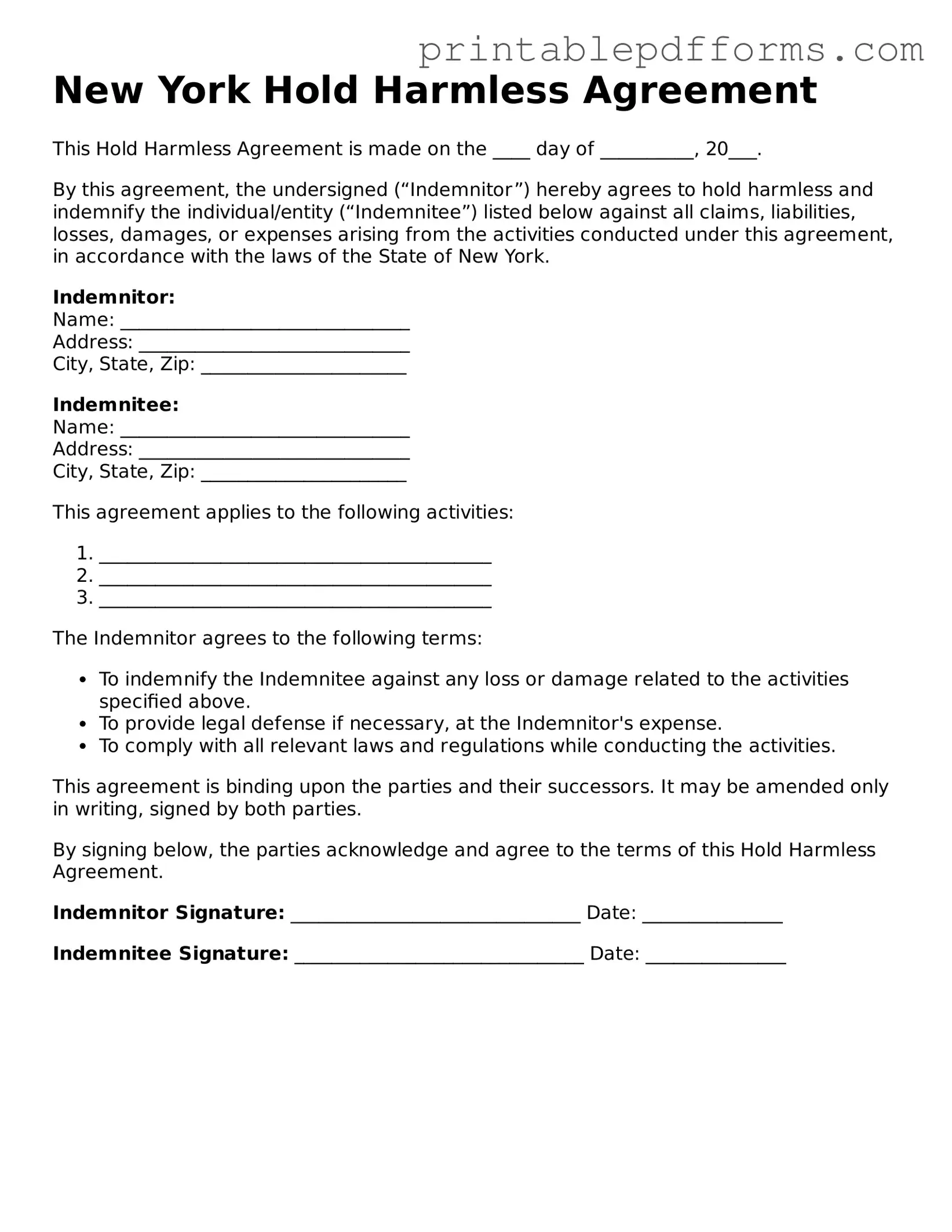New York Hold Harmless Agreement
This Hold Harmless Agreement is made on the ____ day of __________, 20___.
By this agreement, the undersigned (“Indemnitor”) hereby agrees to hold harmless and indemnify the individual/entity (“Indemnitee”) listed below against all claims, liabilities, losses, damages, or expenses arising from the activities conducted under this agreement, in accordance with the laws of the State of New York.
Indemnitor:
Name: _______________________________
Address: _____________________________
City, State, Zip: ______________________
Indemnitee:
Name: _______________________________
Address: _____________________________
City, State, Zip: ______________________
This agreement applies to the following activities:
- __________________________________________
- __________________________________________
- __________________________________________
The Indemnitor agrees to the following terms:
- To indemnify the Indemnitee against any loss or damage related to the activities specified above.
- To provide legal defense if necessary, at the Indemnitor's expense.
- To comply with all relevant laws and regulations while conducting the activities.
This agreement is binding upon the parties and their successors. It may be amended only in writing, signed by both parties.
By signing below, the parties acknowledge and agree to the terms of this Hold Harmless Agreement.
Indemnitor Signature: _______________________________ Date: _______________
Indemnitee Signature: _______________________________ Date: _______________
